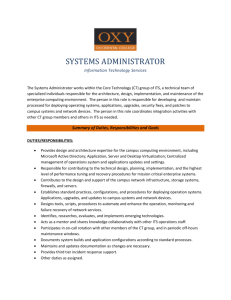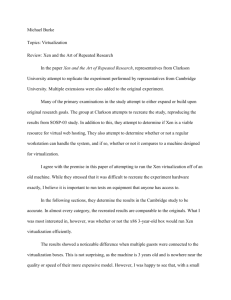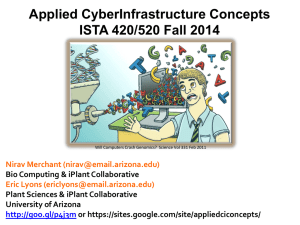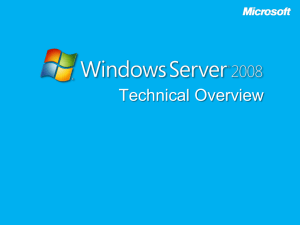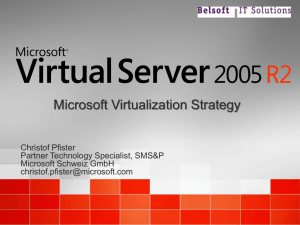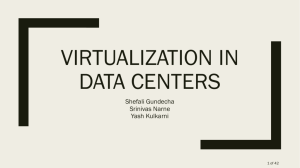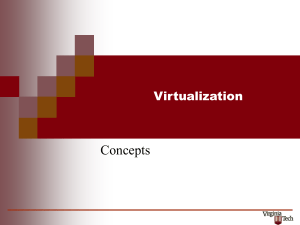Implementing an Advanced Server Infrastructure
advertisement
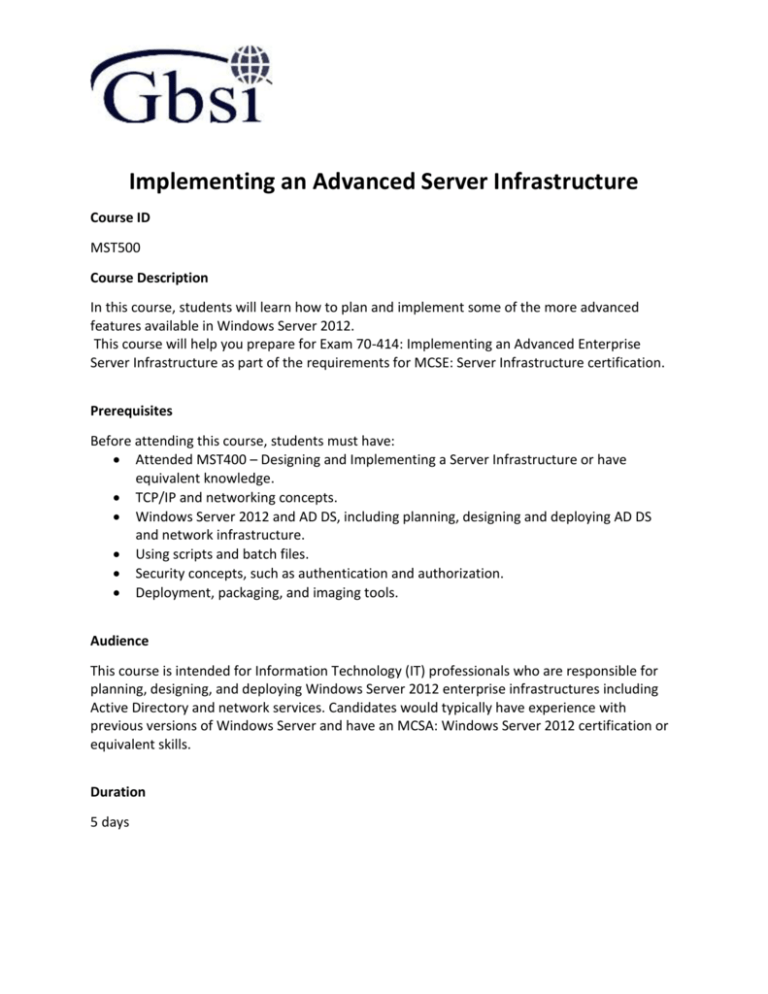
Implementing an Advanced Server Infrastructure Course ID MST500 Course Description In this course, students will learn how to plan and implement some of the more advanced features available in Windows Server 2012. This course will help you prepare for Exam 70-414: Implementing an Advanced Enterprise Server Infrastructure as part of the requirements for MCSE: Server Infrastructure certification. Prerequisites Before attending this course, students must have: Attended MST400 – Designing and Implementing a Server Infrastructure or have equivalent knowledge. TCP/IP and networking concepts. Windows Server 2012 and AD DS, including planning, designing and deploying AD DS and network infrastructure. Using scripts and batch files. Security concepts, such as authentication and authorization. Deployment, packaging, and imaging tools. Audience This course is intended for Information Technology (IT) professionals who are responsible for planning, designing, and deploying Windows Server 2012 enterprise infrastructures including Active Directory and network services. Candidates would typically have experience with previous versions of Windows Server and have an MCSA: Windows Server 2012 certification or equivalent skills. Duration 5 days Course Content Overview of Management in an Enterprise Data Center Overview of the Enterprise Data Center Overview of the Microsoft System Center 2012 Components Considerations for Implementing an Enterprise Data Center Planning and Implementing a Server Virtualization Strategy Planning a VMM Deployment Planning and Implementing a Server Virtualization Host Environment Planning and Implementing a Network Infrastructure for Virtualization Planning and Implementing Networks and Storage for Virtualization Planning a Storage Infrastructure for Virtualization Implementing a Storage Infrastructure for Virtualization Planning and Implementing a Network Infrastructure for Virtualization Planning and Deploying Virtual Machines Planning Virtual Machine Configuration Preparing for Virtual Machine Deployments with VMM Deploying Virtual Machines Planning and Implementing a Virtualization Administration Solution Planning and Implementing Automation with System Center 2012 Planning and Implementing System Center 2012 Administration Planning and Implementing Self-Service Options in System Center 2012 Planning and Implementing a Server Monitoring Strategy Planning Monitoring in Windows Server 2012 Overview of System Center Operations Manager Planning and Configuring Management Packs Planning and Configuration Notifications and Reporting Configuring Integration with VMM Planning and Implementing High Availability for File Services and Applications Planning and Implementing Storage Spaces Planning and Implementing Distributed File System (DFS) Planning and Implementing Network Load Balancing (NLB) Planning and Implementing a High Availability Infrastructure Using Failover Clustering Planning an Infrastructure for Failover Clustering Implementing Failover Clustering Integrating Failover Clustering with Server Virtualization Planning a Multisite Failover Cluster Planning and Implementing Server Update Infrastructure Planning and Implementing a WSUS Deployment Planning Software Updates with System Center 2012 Configuration Manager Planning and Implementing Updates in a Server Virtualization Infrastructure Planning and Implementing Virtual Machine Backup and Recovery Planning and Implementing a Business Continuity Strategy Overview of Business Continuity Planning Planning and Implementing Backup Strategies Planning and Implementing Recovery Planning and Implementing Backup and Recovery of Virtual Machines Planning and Implementing an Public Key Infrastructure Planning and Implementing Deployment of a Certification Authority Planning and Implementing Certificate Templates Planning and Implementing Certificate Distribution and Revocation Planning and Implementing Key Archival and Recovery Planning and Implementing an Identity Federation Infrastructure Planning and Implementing an Active Directory Federation Services (AD FS) Server Infrastructure Planning and Implementing AD FS Claims Providers and Relying Parties Planning and Implementing AD FS Claims and Claim Rules Planning and Implementing an Information Rights Management Infrastructure Planning and Implementing an AD RMS Cluster Planning and Implementing AD RMS Templates and Policies Planning and Implementing External Access to AD RMS Services Planning and Implementing AD RMS Integration with Dynamic Access Control (DAC)
